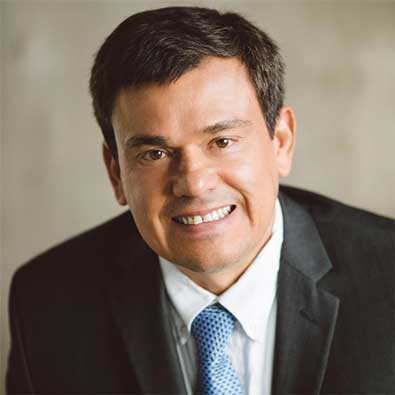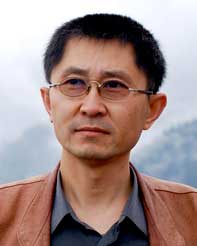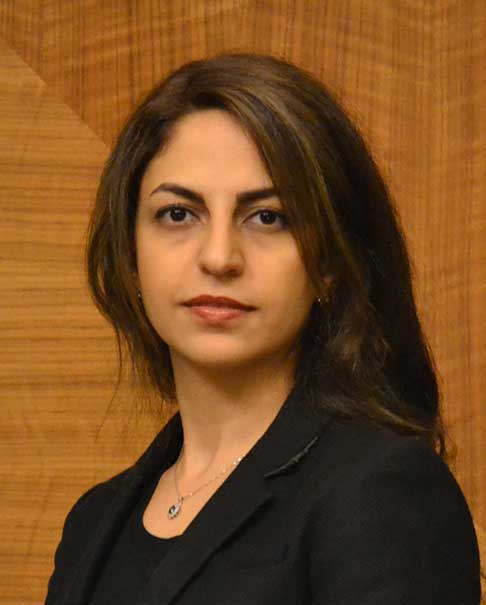By
Amanda Tan - Internet2 Research Engagement Program Manager
Estimated reading time: 5 minutes
The inaugural Internet2/Microsoft Azure Accelerator kicked off on October 5, with four projects selected to receive cloud credits and technical assistance from Azure. As the program reaches the final stretch, we invited our project leads to share their experience with the program and how they are using Microsoft Azure to accelerate their science.
Project Lead: Jose L. Agraz
Project: Breast Cancer H&E stain color normalization. A step closer towards Universal Unbiased Whole-Slide Image Color Normalization
| Learn About Their Findings |
| Teams from these four Internet2/Azure Accelerator for Research projects will showcase their final findings and cloud-optimized research workflows in a virtual presentation on Wednesday, Dec. 7, 2022, 9 – 11 a.m. PT / 12 – 2 p.m. ET. |
| Reserve your spot at the Research Project Showcase |
 Jose L. Agraz
Jose L. Agraz
Describe your research.
Variation in materials, equipment, and staining protocols in breast cancer histology whole slide images (WSI) make WSI staining rife with color disparities, making unseen tumor data classification using machine learning generalization models significantly more challenging. We aim to demonstrate the previously developed Glioblastoma color normalization method may also be applied to breast cancer metastasis in lymph nodes.
What have been the easiest and most difficult aspects of cloud computing for research?
Easiest: Communicating and interacting with Internet2 and Microsoft staff.
Difficult: Understanding Azure architecture in detail while implementing the normalization method within the time given.
What do you hope the audience will learn from your final presentation?
Microsoft Azure is an inexpensive and useful tool for enhancing cancer research.
 Anna Mikkelsen
Anna Mikkelsen
Project Lead: Anna Mikkelsen
Project: CSTSI: Coastal Surveillance of Hawaii’s Shorelines Through Satellite Imagery
Describe your research.
Shorelines are a crucial part of Hawai‘i for recreation, culture, resources, and tourism, but they are challenging to monitor. This project aims to build a framework to detect shoreline positions over the last 30 years using a suite of satellite sources to help understand past shoreline variability and inform our state’s future shoreline change predictions.
What have been the easiest and most difficult aspects of cloud computing for research?
The most challenging [task] has been solidifying a workflow and working out all the adjustments and kinks to get our scripts running on the Azure virtual machines. There are so many options with Azure; it was challenging to navigate the options and build a framework that worked best for us.
The easiest (and most fun!) [task] is to click run and watch the Azure virtual machines zip through your code and write your output! It’s amazing and fun to be able to run things on really fast computers. It’s been a pleasure working with an amazing Azure/Internet2 team as well.
What do you hope the audience will learn from your final presentation?
Two things: 1) That we can use satellite images to understand past changes to our shorelines and inform modeling efforts to better understand future shoreline change and 2) With big data and large datasets available today that many researchers work with, cloud computing can be a really nice solution to barriers for computing resources and storage space.
 Yifeng Cui
Yifeng Cui
Project Lead: Yifeng Cui
Project: Accelerating Earthquake Simulation on Microsoft Azure
Describe your research.
Probabilistic seismic hazard analysis, explicitly incorporating earthquake rupture time histories and deterministic wave propagation effects into seismic hazard calculations through the use of the AWP-ODC 3D waveform simulations, has the potential to be executed as an end-to-end simulation pipeline in the cloud. This project performs a benchmark ground motion simulation and explores various cloud instances of interest to our tightly-coupled workload to be compared to on-premises bare-metal systems.
What have been the easiest and most difficult aspects of cloud computing for research?
The easiest aspect is the ability to spin up virtual machines and compute resources with ease and access the wide variety of CPU and GPU compute options without having to be limited to the resources of a specific machine or supercomputer center.
The most difficult aspect is digesting the wide range of options and configurations available in services like Azure and going through the process of manually installing and configuring dependencies, other software, and file storage. Additionally, there aren’t many resources/forums to help debug common issues with using Azure services.
What do you hope the audience will learn from your final presentation?
The open-source HPC ecosystem is well-prepared to operate high-performance cloud computing solutions in the public cloud with the introduction of lightweight virtualizations and high-bandwidth networks in the public cloud.
Project Lead: Shima Abadi
 Shima Abadi
Shima Abadi
Project: Distributed Acoustic Sensing (DAS)
Describe your research.
Distributed Acoustic Sensing (DAS) is a new sensing technology that transforms telecommunication fiber optic cables into dense acoustic receiver arrays enabling meter-scale recording over tens of kilometers of length. DAS can provide a few TB of data per day with high-resolution acoustic measurements in large spatial and temporal scales. In this study, we use DAS data to characterize the ocean ambient noise and explore best practices for managing big data recorded by these dense and large-aperture arrays.
What have been the easiest and most difficult aspects of cloud computing for research?
Scaling the processing from a few seconds at a time to a few hours is the most important benefit of using cloud computing in DAS data processing. The most difficult part is revising our code to be capable of reading data from the cloud and processing data on the cloud.
What do you hope the audience will learn from your final presentation?
How the public cloud can enhance our understanding of the ocean ambient noise using this large dataset
ICYMI
4 Projects Selected for the Inaugural Internet2/Microsoft Azure Accelerator Cohort
About the Author(s)
Amanda Tan is the Research Engagement Program Manager for the Cloud Learning and Skills Sessions (CLASS) program at Internet2 where she works on the implementation, planning, and development of strategic roadmaps. Amanda is a longtime advocate, teacher, and evangelist for changing the paradigm for how researchers can do faster, better science, and for expanding campus-wide cloud adoption.
Prior to Internet2, Amanda was a Senior Data Science Fellow and Research Scientist at the University of Washington’s eScience Institute. She received her Ph.D. in Environmental Engineering with a focus on water resources management.